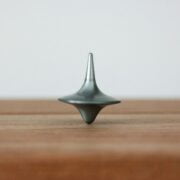
Unlocking the Secrets of Holistic Wellness: A Journey Through Traditional Chinese Medicine
Traditional Chinese Medicine (TCM) is a holistic approach to health and wellness that has been practiced for thousands of years. It originated in ancient China and is based on the belief that the body is interconnected and influenced by the environment. TCM encompasses various practices, including acupuncture, herbal medicine, cupping therapy, Qi Gong, Tui Na massage, diet and nutrition, mindfulness and meditation. These practices are rooted in the principles of balance and harmony, aiming to restore the body’s natural equilibrium.
The philosophy behind TCM is based on the concept of Qi (pronounced “chee”), which is the vital energy that flows through the body. According to TCM, when Qi is balanced and flowing freely, a person experiences good health. However, when there is an imbalance or blockage in the flow of Qi, it can lead to illness and disease. TCM seeks to restore balance and harmony by addressing the root cause of the imbalance rather than just treating the symptoms.
Key Takeaways
- Traditional Chinese Medicine is a holistic approach to health and wellness that emphasizes balance and harmony in the body.
- The Five Elements (wood, fire, earth, metal, and water) play a key role in TCM and can be used to diagnose and treat imbalances.
- Acupuncture is a popular TCM therapy that involves inserting needles into specific points on the body to promote healing and relieve pain.
- Cupping therapy involves placing cups on the skin to create suction and promote blood flow, which can help with pain relief and detoxification.
- Herbal medicine is a natural and effective way to treat a variety of ailments, and can be used in conjunction with other TCM therapies for optimal results.
The Five Elements and Their Role in Holistic Wellness
In TCM, the Five Elements (Wood, Fire, Earth, Metal, Water) are used to understand the relationships between different aspects of the body and overall health. Each element corresponds to specific organs, emotions, seasons, colors, tastes, and more. For example, Wood corresponds to the liver and gallbladder organs, the emotion of anger, the season of spring, the color green, and the taste of sour.
The Five Elements are interconnected and influence each other. When one element is out of balance, it can affect other elements as well. TCM practitioners use this understanding to diagnose imbalances in the body and develop treatment plans that aim to restore harmony between the elements.
Balancing the Five Elements is essential for optimal wellness. This can be achieved through various TCM practices such as acupuncture, herbal medicine, and diet and nutrition. For example, if someone has an imbalance in the Wood element, they may experience symptoms such as irritability, headaches, and digestive issues. TCM treatments for this imbalance may include acupuncture points that correspond to the liver and gallbladder, herbal remedies that support liver function, and dietary recommendations that include foods that are beneficial for the Wood element.
Acupuncture: An Ancient Therapy for Modern Health Concerns
Acupuncture is one of the most well-known and widely practiced forms of TCM. It involves the insertion of thin needles into specific points on the body to stimulate the flow of Qi and restore balance. Acupuncture is based on the belief that there are meridians or pathways in the body through which Qi flows. When these meridians are blocked or imbalanced, it can lead to pain and illness.
Acupuncture can be used to treat a wide range of conditions, including chronic pain, migraines, digestive disorders, anxiety, depression, and infertility. It is believed to work by stimulating the release of endorphins, which are natural painkillers produced by the body. Acupuncture also helps to regulate the nervous system and improve blood circulation.
While acupuncture is generally considered safe when performed by a qualified practitioner, there are some potential risks involved. These include bruising or bleeding at the needle insertion site, infection if proper sterilization procedures are not followed, and rare instances of organ puncture. It is important to seek treatment from a licensed acupuncturist who has undergone extensive training and follows strict hygiene protocols.
Cupping Therapy: A Traditional Technique for Pain Relief and Detoxification
| Metrics | Description |
|---|---|
| Origin | Cupping therapy is a traditional Chinese medicine technique that dates back to 3000 BC. |
| Benefits | Cupping therapy is believed to relieve pain, reduce inflammation, improve blood flow, and promote relaxation. |
| Types | There are two types of cupping therapy: dry cupping and wet cupping. |
| Procedure | Cupping therapy involves placing cups on the skin and creating a vacuum to suction the skin into the cup. |
| Side effects | Common side effects of cupping therapy include bruising, skin irritation, and discomfort. |
| Research | While cupping therapy has been used for centuries, there is limited scientific research on its effectiveness. |
Cupping therapy is another ancient technique used in TCM. It involves placing glass or plastic cups on the skin and creating a vacuum by either heating the cups or using a suction device. The suction pulls the skin into the cups, creating a therapeutic effect.
Cupping therapy is commonly used for pain relief, particularly in musculoskeletal conditions such as back pain, neck pain, and arthritis. It is believed to work by increasing blood flow to the affected area, promoting healing and reducing inflammation. Cupping therapy can also be used for detoxification, as it helps to stimulate the lymphatic system and remove toxins from the body.
Like acupuncture, cupping therapy is generally safe when performed by a qualified practitioner. However, there may be some potential risks involved. These include bruising or skin discoloration at the cupping site, burns if the cups are heated too much, and rare instances of infection if proper hygiene protocols are not followed.
Herbal Medicine: Natural Remedies for Various Ailments
Herbal medicine is an integral part of TCM and has been used for thousands of years to treat various ailments. It involves the use of plants and plant extracts to promote healing and restore balance in the body. TCM practitioners prescribe herbal remedies based on the individual’s specific needs and imbalances.
There are hundreds of herbs used in TCM, each with its own unique properties and therapeutic effects. Some common herbs used in TCM include ginseng, ginger, licorice root, astragalus, and turmeric. These herbs can be taken in various forms, including teas, powders, capsules, and topical ointments.
Herbal medicine can be used to treat a wide range of conditions, including digestive disorders, respiratory conditions, hormonal imbalances, skin conditions, and immune system disorders. It is important to note that while herbal medicine is generally considered safe when prescribed by a qualified practitioner, there can be potential risks involved. Some herbs may interact with medications or have side effects if not used properly.
Qi Gong: A Mind-Body Practice for Stress Reduction and Energy Cultivation

Qi Gong is a mind-body practice that combines gentle movements, breathing exercises, and meditation to cultivate Qi and promote overall health and well-being. It is based on the belief that Qi can be cultivated and directed through the body for healing and vitality.
Qi Gong is often used as a form of stress reduction and relaxation. It helps to calm the mind, reduce anxiety, and improve mental clarity. Qi Gong also helps to improve physical health by increasing flexibility, strength, and balance. It can be practiced by people of all ages and fitness levels.
To practice Qi Gong, one must focus on deep breathing, gentle movements, and visualization. There are many different styles and forms of Qi Gong, each with its own unique set of movements and techniques. It is important to learn from a qualified instructor who can guide you in the proper techniques and ensure that you are practicing safely.
Tui Na Massage: A Holistic Approach to Musculoskeletal Pain and Disorders
Tui Na massage is a form of Chinese therapeutic massage that is often used in conjunction with acupuncture and other TCM practices. It involves various techniques such as kneading, rolling, pressing, and stretching to stimulate the flow of Qi and restore balance in the body.
Tui Na massage is commonly used to treat musculoskeletal pain and disorders such as back pain, neck pain, sciatica, and arthritis. It helps to relieve tension, reduce inflammation, improve circulation, and promote healing. Tui Na massage can also be used for relaxation and stress reduction.
To receive Tui Na massage, one must lie on a massage table or sit in a chair while the practitioner applies various techniques to the body. The practitioner may use their hands, fingers, elbows, or even tools to apply pressure and manipulate the muscles and joints. It is important to communicate with the practitioner about your comfort level and any specific areas of concern.
Diet and Nutrition: The Importance of Eating for Optimal Health
Diet and nutrition play a crucial role in TCM. According to TCM principles, certain foods have specific properties and energies that can either support or disrupt the balance of Qi in the body. By incorporating TCM principles into your diet, you can promote optimal health and prevent imbalances.
In TCM, foods are classified based on their energetic properties, such as temperature (hot, warm, neutral, cool, cold), taste (sweet, sour, bitter, pungent, salty), and their effects on the body (warming, cooling, drying, moistening). For example, if someone has a Yin deficiency (characterized by symptoms such as dryness, heat, and restlessness), they may be advised to eat foods that are cooling and moistening, such as cucumber, watermelon, and mung beans.
It is also important to consider the quality of the food you eat. TCM emphasizes the importance of eating whole foods that are fresh, seasonal, and locally sourced. Processed foods, excessive sugar, and artificial additives should be avoided as they can disrupt the balance of Qi in the body.
Mindfulness and Meditation: The Power of Mental Wellness in Holistic Healing
Mindfulness and meditation are integral components of TCM. They help to calm the mind, reduce stress, and cultivate a state of inner peace and harmony. Mindfulness involves being fully present in the moment and observing one’s thoughts and emotions without judgment. Meditation involves focusing the mind on a specific object or mantra to achieve a state of deep relaxation and mental clarity.
Practicing mindfulness and meditation has numerous benefits for mental and physical health. It can help to reduce anxiety and depression, improve sleep quality, enhance cognitive function, boost immune function, and lower blood pressure. Mindfulness and meditation also help to cultivate self-awareness and promote a sense of interconnectedness with oneself and the world around them.
To practice mindfulness, one can start by simply paying attention to their breath or engaging in activities such as walking or eating mindfully. Meditation can be practiced in various forms, such as sitting meditation, guided meditation, or moving meditation (such as Tai Chi or Qi Gong). It is important to find a quiet and comfortable space where you can practice without distractions.
Integrating Traditional Chinese Medicine with Modern Western Medicine: A Comprehensive Approach to Health and Wellness
Integrating TCM with modern Western medicine can provide a comprehensive approach to health and wellness. While TCM focuses on restoring balance and harmony in the body, Western medicine often focuses on diagnosing and treating specific diseases. By combining the strengths of both approaches, individuals can benefit from a more holistic and personalized approach to their health.
There are many ways in which TCM and Western medicine can work together. For example, a person with chronic pain may receive acupuncture treatments to manage their pain while also taking medication prescribed by their Western medical doctor. A person with cancer may receive chemotherapy or radiation treatment while also using herbal remedies to support their immune system and reduce side effects.
It is important to find a qualified TCM practitioner who is licensed and has undergone extensive training. They should have a thorough understanding of both TCM principles and Western medical practices. It is also important to communicate with your Western medical doctor about any TCM treatments you are receiving to ensure that there are no contraindications or interactions with your medications.
Conclusion: The Holistic Approach to Health and Wellness with Traditional Chinese Medicine
Traditional Chinese Medicine offers a holistic approach to health and wellness that addresses the root cause of imbalances in the body. By incorporating various TCM practices such as acupuncture, cupping therapy, herbal medicine, Qi Gong, Tui Na massage, diet and nutrition, mindfulness and meditation, individuals can promote optimal health and well-being.
TCM recognizes the interconnectedness of the body, mind, and spirit and seeks to restore balance and harmony in all aspects of a person’s life. By addressing the underlying imbalances and promoting self-care practices, individuals can experience improved physical, mental, and emotional health.
While TCM should not replace Western medicine, it can be used in conjunction with it to provide a comprehensive approach to health and wellness. By working with qualified practitioners and communicating with your healthcare team, you can create a personalized treatment plan that meets your specific needs and goals.
Exploring TCM can be a transformative journey towards optimal health and wellness. Whether you are seeking relief from chronic pain, managing a chronic condition, or simply looking to improve your overall well-being, TCM offers a wealth of practices and techniques that can support your journey towards a healthier and more balanced life.
If you’re interested in delving deeper into the ancient practice of Traditional Chinese Medicine (TCM) and its benefits for holistic wellness, you might find this article from Wave Magnets intriguing. Wave Magnets is a website dedicated to exploring alternative healing methods, and their article on TCM provides valuable insights into the principles and techniques used in this ancient practice. Discover how TCM can help restore balance and promote overall well-being by visiting https://wavemagnets.com/sample-page/.
FAQs
What is Traditional Chinese Medicine (TCM)?
Traditional Chinese Medicine (TCM) is a holistic approach to healthcare that has been practiced for over 2,500 years. It includes various practices such as acupuncture, herbal medicine, massage, and dietary therapy.
What are the principles of TCM?
TCM is based on the principles of yin and yang, the five elements (wood, fire, earth, metal, and water), and the concept of Qi (pronounced “chee”), which is the vital energy that flows through the body.
What conditions can TCM treat?
TCM can be used to treat a wide range of conditions, including chronic pain, digestive disorders, respiratory disorders, infertility, and mental health issues such as anxiety and depression.
What is acupuncture?
Acupuncture is a practice in which thin needles are inserted into specific points on the body to stimulate the flow of Qi and promote healing. It is often used to treat pain and other physical and emotional conditions.
What is herbal medicine?
Herbal medicine involves the use of plants and plant extracts to treat various health conditions. In TCM, herbal medicine is often used in combination with other therapies such as acupuncture and dietary therapy.
What is dietary therapy?
Dietary therapy involves the use of food and nutrition to promote health and prevent disease. In TCM, dietary therapy is based on the principles of yin and yang and the five elements, and is tailored to the individual’s specific needs and health concerns.
Is TCM safe?
When practiced by a qualified practitioner, TCM is generally considered safe. However, as with any form of healthcare, there are some risks and potential side effects, particularly if the practitioner is not properly trained or if the patient has underlying health conditions.
Is TCM recognized by Western medicine?
While TCM is not widely recognized by Western medicine, there is growing interest in its potential benefits and many Western healthcare providers are now incorporating TCM into their practices.


















